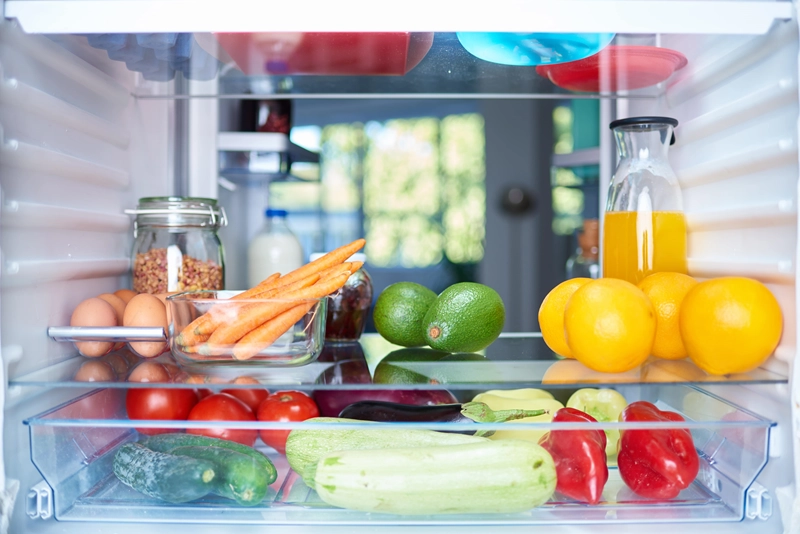How To Organise Your Fridge Freezer

Organising your fridge freezer can seem like a daunting task, but when following a few simple organisational tips, you can create a tidy and well-ordered space that makes meal prep and food shopping a lot more straightforward. By taking the time to assess, prepare, and categorise your items, you will have a clear technique of how to maximise storage space and reduce food waste.
With effective placement and a strategy for storage, you will be able to preserve the shelf-life of your food products and avoid the build-up of clutter. Follow along with our step-by-step tips on how to help you organise your fridge freezer.
Organising Your Fridge Freezer
Organising your fridge freezer is not just about making it look pretty and aesthetical, instead, it is about ensuring the safety of food, minimising waste, and increasing the efficiency of your kitchen. A neatly organised fridge freezer helps to retain proper temperature levels, making sure that perishable items stay fresh for longer periods.
By arranging food items tactically, you will be able to easily find what you need, which not only saves time but also helps to remember to not overbuy certain products that you already have. Additionally, organised storage is proven to reduce the risk of cross-contamination and foodborne illnesses, creating a healthier environment for both yourself and your family.
In addition to this, reducing food waste by sorting out your fridge freezer helps contribute to eco-friendly efforts, as it reduces the amount of food sent to landfills. Here are some ways that can help you take the next step in organising your fridge freezer.
Make sure to check for any spills or leaks that may require cleaning, having a clean interior will make the organisation process much easier to progress with. Additionally, think about the layout and shelving arrangement, and think about ways that the extra space could be used efficiently to store food.
Preparation
Before getting into the process of organising, it is important to look at and analyse the current state. Make a start on this by figuring out what stock is inside, and taking note of any foods or items that have expired or are due to expire, so that these items can be thrown away to avoid space being taken up.
Make a start by emptying out all items from the fridge and freezer compartments. Make sure to check for any spills or leaks that may require cleaning, having a clean interior will make the organisation process much easier to progress with. Additionally, think about the layout and shelving arrangement, and think about ways that the extra space could be used efficiently to store food.
Once you have cleaned the interior and it is clean and dry, get a bunch of any necessary storage tools that will help to separate your foods such as storage bins, labels, storage baskets, and shelf liners. Think about the layout of your fridge freezer and how you would like to organise it, this could be by the food category, meal prep, or how often you use an item.
Before putting your food items back into your fridge freezer, take the time to analyse the current condition and decide if any items need to be repackaged or sealed. Consider transferring items to an alternative airtight container or resealable bag to increase freshness.
Grouping Food Categories
Categorising food types is an essential step in organising your fridge freezer. Make a start by grouping similar food types together, such as fruit, dairy, meats, vegetables, and drinks. This approach will not only make it much easier to find specific items when you need them but also help to prevent cross-contamination when stored.
Fridge Organisers
Fridge organisers are another great way to help keep your refrigerated food organised and fresh. Storage containers come in various shapes and sizes that are specifically designed to fit perfectly into the shelves. Organisers help to keep vegetables, meats, dairy products and fruits neatly sorted and easily accessible, avoiding old and expired foods being kept behind clutter.
Temperature
Ensuring the correct temperature of both your fridge and freezer is essential for safe and and compliant storage of food items. The temperature of your freezer should be -18 degrees Celsius, this is to ensure that food kept inside the freezer is kept at a suitable temperature. Additionally, your fridge should be kept at a temperature between 1 and 5 degrees Celsius to ensure sufficient cooling.
To find out more about our fridge freezers, visit Mullen Domestics.



